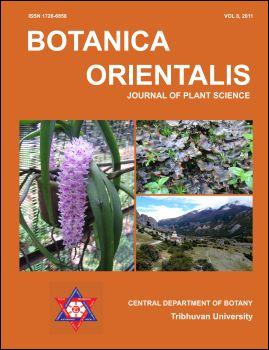Physiology of fruit cracking in wax apple (Syzygium samarangense)
DOI:
https://doi.org/10.3126/botor.v8i0.5954Abstract
The cause of fruit cracking can be diverse and the reasons vary among species. Wax apple (Syzygium samarangense) fruit is an economically valuable fruit in Southeast Asia and in Taiwan. The main problem in the production of wax apple is cracking which reduces its market value. The aim of this study is to identify the factors associated with fruit cracking in wax apple. Results showed that the contents of total soluble sugars and total titratable acid were both 20% higher in cracked fruits than in uncracked fruits, and the osmotic potential was 40% lower; water potential was similar; turgor pressure was 60% higher, and specific activity of polygalacturonase was 131% higher. Based on the above results, the physiological factors for fruit cracking in wax apple are hypothesized. The increase in total soluble sugars and total titratable acid during fruit maturation leads to decreased tissue osmotic potential. Water absorption in response to this decrease in osmotic potential can cause cells to swell, which increase the turgor pressure resulting in rupture of the cells and tissues. The increase in polygalacturonase activity weakens the cell walls. Those combined factors result in fruit cracking.
Botanica Orientalis – Journal of Plant Science (2011) 8: 70-76Downloads
Downloads
Published
How to Cite
Issue
Section
License
This license enables reusers to copy and distribute the material in any medium or format in unadapted form only, for noncommercial purposes only, and only so long as attribution is given to the creator.




